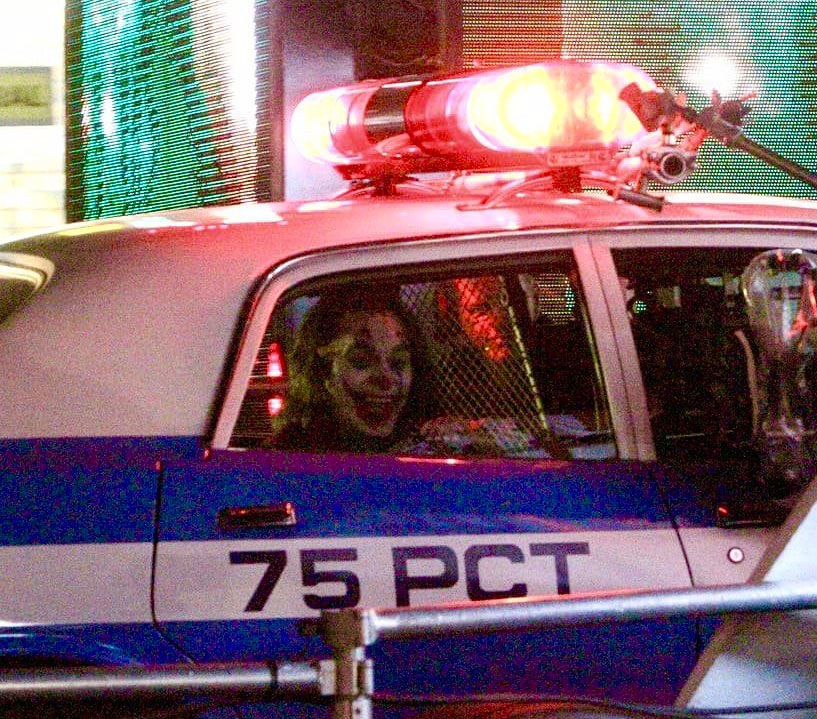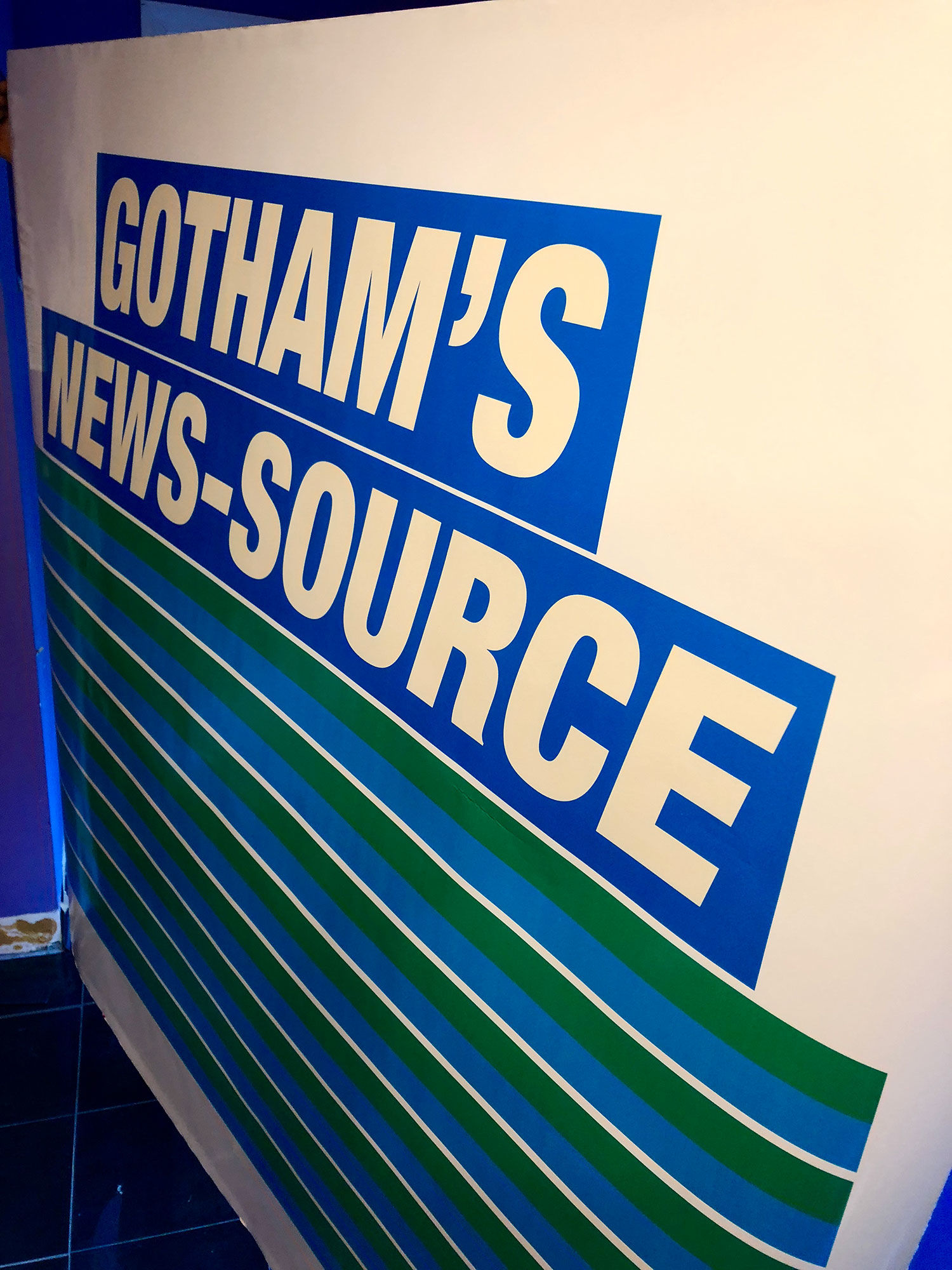Joker and the superhero graphic designers behind his world
After Scorsese, Spider-Man and some DC classics, South Shore lend their graphic designs to the Joaquin Phoenix vehicle everybody’s talking about.
Cladio Juliano is a design superhero. Not only an artist in his own right, plus the head of his own studio, the designer is also a major force behind ArtStudio, one of the best art apps out there for the iPad.
This week you’ll see his work in the most talked about release of the moment, Joker, the DC origin movie about everyone’s favourite comic book villain. He isn’t the man who painted the Joker’s face, but his New York-based South Shore Signs & Graphics studio did build the branding seen in this new rendition of Gotham City.
[embedded content]
South Shore has not only lent its talents to films like Amazing Spider-Man 2 and The Dark Knight Rises, but also the upcoming Wonder Woman 1984 and The Irishman by Martin Scorsese. The Scorsese connection is an apt one when you consider Joker‘s much evident debt to classics from the director such as Taxi Driver and The King of Comedy.
We grabbed some email time with Cladio about his work on Joker, along with exclusive and perhaps mildly spoilery on-set photos taken from the shoot.
What world was being evoked through the designs for Joker? And how did this vision of Gotham compare against your work on The Dark Knight Rises?
“In most cases mood is chosen by the actual director of the film, along with their team and art directors. The director usually has all creative control, which gets funelled down the line to us and we help bring it to life and into the real world. It’s very much a team effort.
“That was the case with Joker. Those creative choices were all made through the director and his teams; however, on some films, my team has creative control.

“When the director is great, and those who work under them are solid, it makes our portion of the work go really smooth. From analysing everything that we did I can say that the director really went for a much darker and grittier Gotham City than what we’ve seen before.
“They really pulled from how things were in New York during the ’80s time period which the film is set in. I think Joker being a period piece adds a lot to how Gotham comes to life, a very different Gotham versus the modern one we saw in Christopher Nolan’s films.”
What elements are you super proud of in Joker?
“I am just excited to have played a small role in something that many other artists, designers, and creators also contributed to that in the end makes up the big picture.
“Being part of something with such an iconic character, the fresh take on the character, it being a period piece with the classic vehicles we got to work with and how they contribute to the backdrop and cimatography/overall contrast of the film, plus the enthusiasm fans of the character have for this take on him, and the enthusiasm from those who follow my work.

“This is really the first true deep character study of such a character and it was a really fun one to be a part of. I’m proud of the print and installation work we did and how it serves the backdrop and contrast. If you look closely you’ll see the back of the ambulances make up the face of the Joker! In a sense the props are also characters that help bring everything to life.”


Joker obviously isn’t a superhero film, but what have you learnt from doing graphics for superhero movies in the past? Joker must have been such a different experience.
“What I’ve really learned all depends on the director. Everyone working on a film is working under their direction.
“When I look back we’ve gotten to work with some incredible directors that really value real props, shooting in real world locations versus pure CGI and set building. What I’ve learned is it’s very much grounded in mimicking the real world that surrounds us every day.


“Joker was certainly a different vibe as opposed to a really big super hero film, but it also shared similarities in process. It was definitely less amplified, and I can see that the director had a great sense of the power of simplicity in how he placed things.”
How did you and the South Shore team move into the world of graphic design for cinema?
“We got ourselves in through the reputation we were gaining through our work and work ethic. Once we had our foot in the door we made sure to do our best to impress the people who needed to be impressed.
“In film graphics we started with really small films, and as we worked our way up each year things started to grow and get bigger. They continued to grow each year and then our first major project came.


“Over the span of 11 years now it’s been really fun. Don’t get me wrong, it also gets pretty hectic and stressful at times with the need for very fast turnaround times. Another part that makes things a bit stressful is that in many cases the shooting process cannot be done until all props graphics are done and ready to go.
“We enjoy that it’s a collaborative effort. A film has many different units and moving parts and there’s so many people helping make it come together. From production crews, to set designers, to art directors, and a verity of other artists and designers, along with our operation. It’s a very collaborative effort.”
What should designers know about moving into this field?
“You have to be prepared to churn things out fast. We’ve worked on plenty of film projects that had us working till 3AM, and the need for something can be sudden. So, sometimes you have to turn around things in 24 hours or less. That’s doesn’t happen all the time, but it does happen on occasion.
“Being also the printer and print operator, also handling all physical installations is one of the most fulfilling parts of the work for me. Each is an art in itself.


“Getting to see it manifest into the real world through large scale print is really awesome. That’s why, even as a digital artist, I’ve always been so passionate about print.”
Read next: Why the iconic Batman 1989 movie logo and design work by Anton Furst still resonate

https://www.digitalartsonline.co.uk/features/graphic-design/joker-superhero-graphic-designers-behind-his-world/